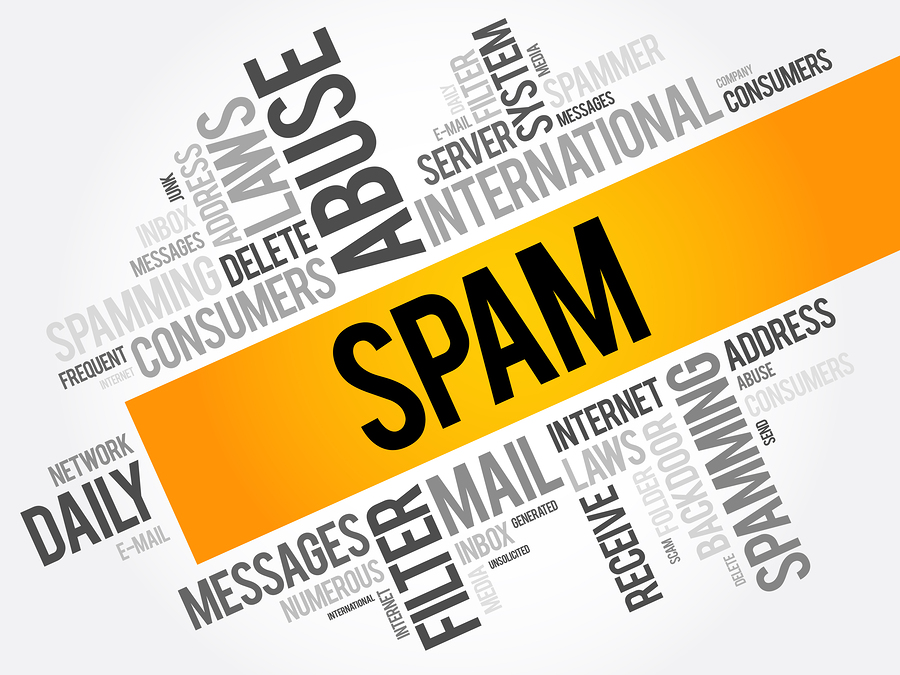
If you are an email marketer there are two dreaded words you never what to hear: Spam Filter. But what are spam filters? Basically, a spam filter is a program that is used by browsers and servers to detect unsolicited and unwanted email from going to a recipient’s inbox. A spam filter looks for certain words and phrases and automatically judges whether it is spam or not.
The earliest versions could be set to look for certain criteria in the subject line of emails and route them to the spam folder on computers. As time has passed, these filters have become more intricate and sophisticated, and are constantly being updated. Unfortunately, sometimes what is legitimate communication is routed to this trash file, and vice versa.
The question is, how can you avoid these spam filters and get your emails into the hands and on the computer screens of people who need your service or product. Below you will find some tips that may help you avoid this conundrum in 2020.

Be original
The subject line is the place to start when avoiding spam filters. Make it personal and yours. Avoid those topics or subjects that you have seen over and over again. Make it new and informative. We all receive dozens of emails every day. Have you seen some subjects that have been successful? If so, we’re not recommending that you copy them, but you can use them for inspiration.
Not only is it illegal due to copyright law, it’s just not ethical either. Take it and adapt it with your own spin. Make it stand out so that you are identified with your own approach but remember to be professional and credible. Stand behind what you say and do.
Use Personalized Email Address
A personalized email is more likely to be opened and read. Don’t just use the subscribers name in the email but use your personal email domain as well. Everyone you know has a personal email address and its one of the triggers that email spam filters look for. By sending from an original domain you add credibility to the email. The credibility an email has the more likely it is to be delivered to the inbox and not the spam folder. It is also more likely to be opened and read.
List Scrubbing
Okay, what is it? Let’s look at it this way. You may have wonderful content, and people follow you and reply, but no matter how good you are, you are going to lose people over time. Some change email addresses, some just aren’t interested anymore. Whatever the reason, the email just sits there, unopened and unread. Don’t forget this can affect the deliverability of emails, which means they really don’t go anywhere. So, what to do?
Go through your list and get rid of those subscribers who are idle. Those who haven’t answered or purchased from you in a while. It could be six months or yearly. You decide the time frame. But, if you clean out the clutter, it will increase the list’s opening rates, so your emails are delivered more effectively to the ones who are still interested and active.
Link Cloaking
Do you partner with affiliates? Link cloaking is an intelligent way to place a link in your email so that it is masked. It has a separate URL, which will send the reader to the affiliate offer. You may see these in things like games you play on your phone or open in a browser. But how does this happen?
- A cloaked link helps to shorten those heavy links which makes them more appealing to the eye.
- It allows the sender to track the number of clicks.
- It protects the affiliate from being taken and used by another affiliate
- It makes links easier to change.
- It makes the affiliate look more professional and credible, which will in turn prompt more clicks.
Use Plain HTML
The less fancy and email are the more likely it will make it to the inbox. This is the simplest form of email which makes it highly deliverable. Things like banners, images, templates, headers and footers are often sent directly to spam.
The best emails are the ones which appear to be written from one friend to another. Email marketing is all about relationships and engagement.
Watch out for Trigger Words
Spammers the worldwide have become educated and learned in the use of trigger words. There is a long (and growing longer by the day) litany of words and symbols that will send an email, no matter how well written, straight to spam. Here are some samples of what not to use:
- $$$
- Make money
- Change your life
- Earn $
- Income
- Limited time
- 100% free
- Act now
- Affordable
- Order now
- No cost
- No investment
- Weight loss
- Urgent
- Cash bonus
- Apply now
These are just a few. Spam filters are adding more and more words to the list just about every day, so be cognizant of the words you type.
Write an Ideal Subject Line
Like we mention before, people can get hundreds of emails daily. What unique subject line can you think of that will make that prospective buyer take notice? An effective subject line is the place to start, since it is the first thing a reader looks at. Here are a few things to be leery of:
- ALL CAPS
- Lots of punctuation
- Make sure the name is clear with no weird spaces, or special characters
- Keep it to 59 characters or fewer, or slightly over 5 with less than a dozen words at the most.
- Make it unique. Don’t copy and paste another’s idea
Email at the Right Times
Timing can be critical. Some experts state to email early morning and late afternoon are best. Try to avoid weekends since these are the times and days when people are busy with other things and do not check their emails as often.
Call to Action
No matter what time of email you send, you want the receiver to do something. So, you want to include a call to action (CTA) in every email. Urge them to visit a website. Invite them to watch something on YouTube about your product, answer a poll. People respond better when you tell or direct them to do something; but, word it carefully to keep the spam filters at bay.
Testing 1-2-3
It is so important to know what works as well as what doesn’t. It is important to try out different ideas and techniques in the subject lines, and even in the body of the message. Experiment and find out what works. Send out a message and see if it works. If not, reword it or try something new. Send it out and repeat the process until you get it down pat.

In Summary…
Spam filters are not going the way of the dinosaurs. In fact, they are becoming ever more sophisticated and intricate. You must learn what you can do to avoid them, and that takes practice.
In addition to following each of the tips and recommendations laid out above, it’s also important to have super high-quality email data to work with. This is something we can help with, as AfterOffers only delivers 100% opt-in email leads.
To learn more about this process and getting started with your own campaign, be sure to contact us today.